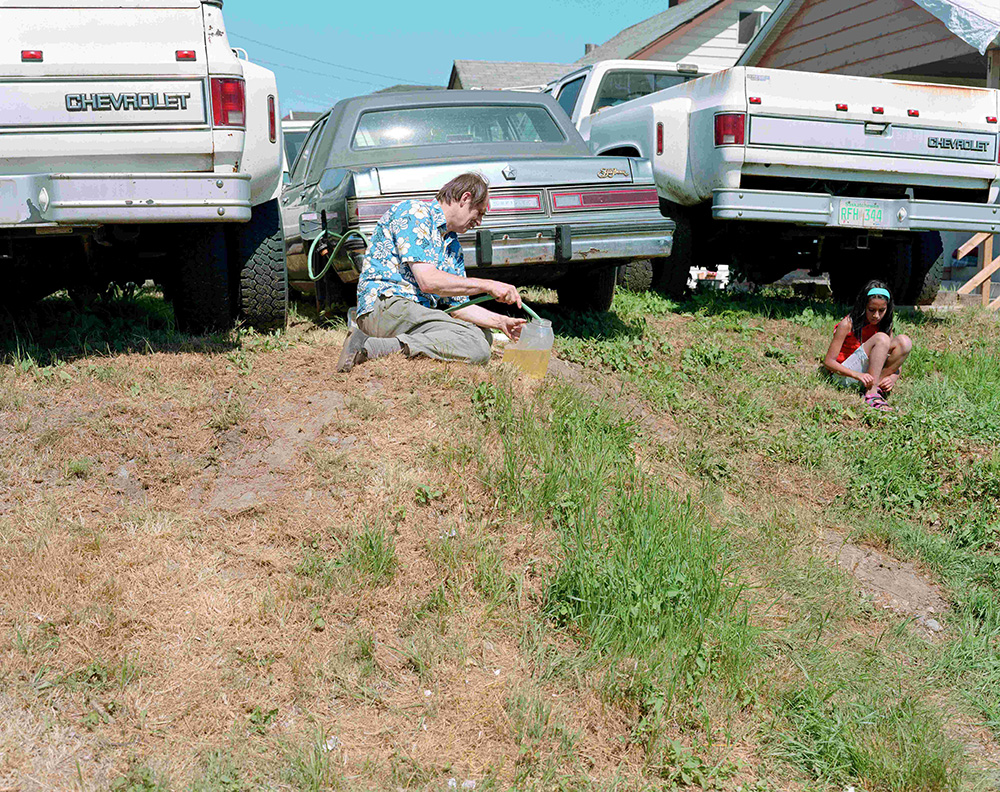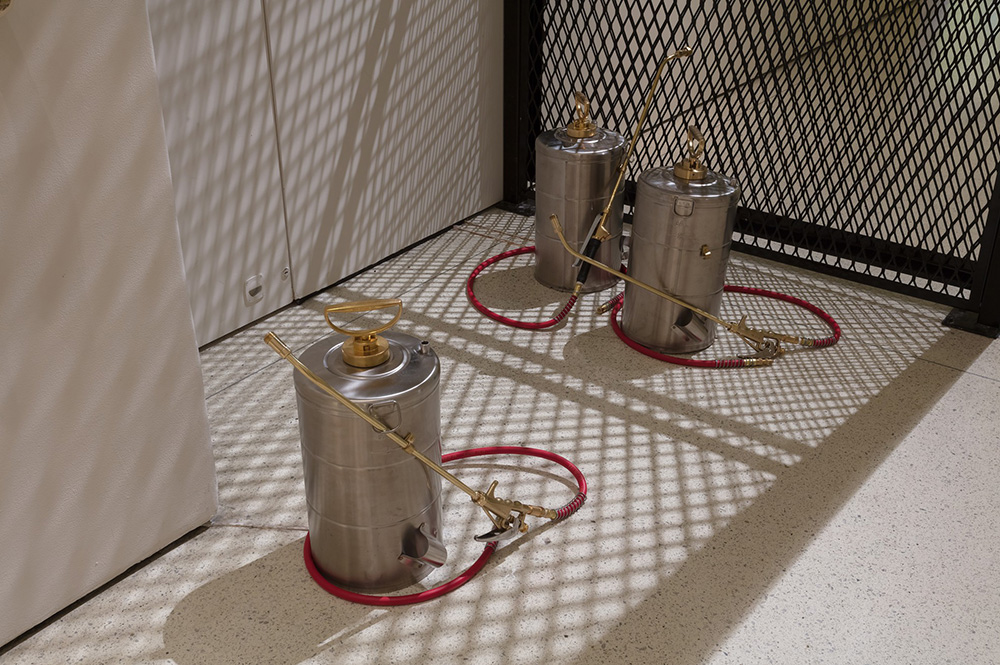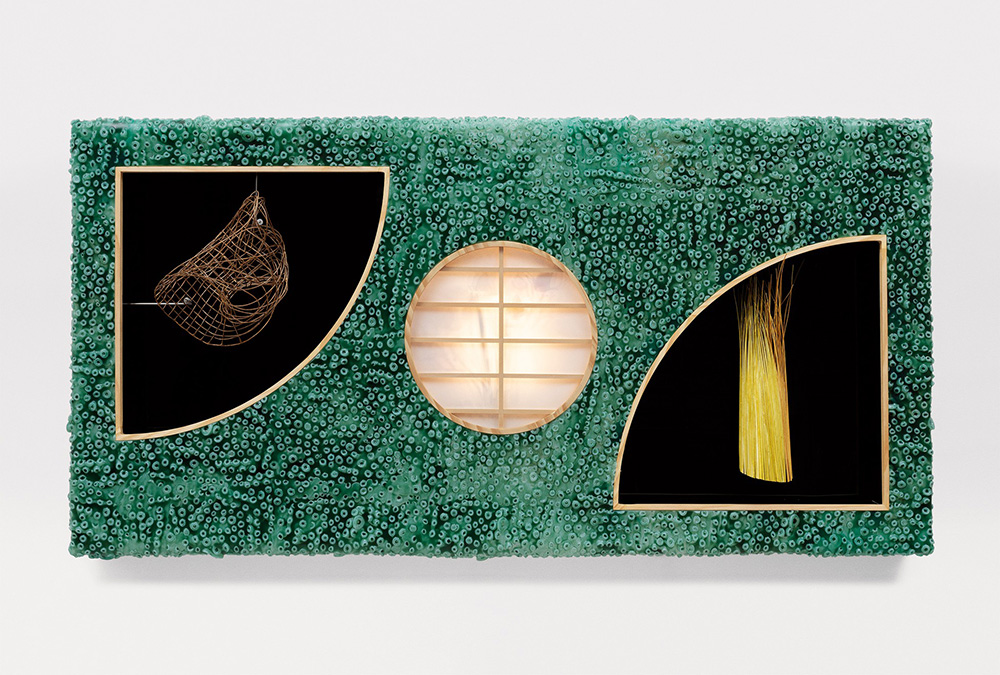ART CITIES:Hong Kong-Laws of Motion

If Karl Marx’s theory of surplus-value is his most revolutionary contribution to economic science, his discovery of the basic long-term “Laws of motion” (development trends) of the capitalist mode of production constitutes undoubtedly his most impressive scientific achievement. No other 19th Century author has been able to foresee in such a coherent way how capitalism would function, would develop and would transform the world, as did Karl Marx. Many of the most distinguished contemporary economists, starting with Wassily Leontief (1938), and Joseph Schumpeter (1942) have recognised this.
By Dimitris Lempesis
Photo: Gagosian Archive
The title of the exhibition “Laws of Motion” refers to Karl Marx’s application of scientific laws to systems of capital, and presents works by: Josh Kline, Jeff Koons, Cady Noland, Rosemarie Trockel, Jeff Wall, and Anicka Yi. Forty years ago, the art of Jeff Koons, Cady Noland, Rosemarie Trockel, and Jeff Wall merged strategies of commercial display and formalism, isolating inherent social archetypes and stereotypes. The exhibition begins with key artworks from the 1980s that responded to a world saturated in the aesthetics and language of advertising, exploiting its techniques while making visible its latent and subconscious pull. Jeff Koons’s series “The New” examines themes of domestic use and hygienic order, employing industrial readymades such as vacuum cleaners stacked and isolated in gleaming museum vitrines. The built-in obsolescence of domestic tools and consumer products contrasts with their aspirational qualities, raising philosophical questions of newness and desire. While Cady Noland’s assemblage of emptied beer bottles and a discarded mailbox in “Trashed Mailbox” (1989) conjures a potent image of American male delinquency, Rosemarie Trockel’s wall-mounted stove top reduces or elevates a central symbol of domestic life to pure geometric abstraction, obliquely engaging a feminist discourse. In the late 1970s, Jeff Wall began presenting photographs as light boxes, a format typically used for display advertising. Over the following decades, he created images that were both epic and intimate reflections on the actions and accumulations of daily life. “Diagonal Composition” (1993) depicts banal and abject subject matter using formal harmony and rich chromatic detail. In “Men Move an Engine Block” and “Siphoning Fuel” (both 2008) the car is a focus of both communal enterprise and criminal exploitation. With the onset of the digital age, the relationship between marketing, labor, and value has grown ever more symbiotic, just as the purity of art, media, and data becomes increasingly elusive. Recent works by Anicka Yi and Josh Kline identify updated manifestations of the heady consumerism of the 1980s. Anicka Yi engages the politics and personal resonance of chemicals, bacteria, and other normally ambient matter, in order to create moments of disequilibrium that underscore gender inequality, environmental degradation, and institutional mechanisms of power and control. For “Immigrant Caucus” (2017), she distilled a number of olfactory elements into portable spray cans, asking, “How do we imagine that immigrants, or foreigners, smell?” On “Being Biochemical” and “Quorom Sensing” (both 2018) are rectangular wall-hung boards covered in what resembles an organic growth: mold or fungus, as though a clinically defined area has been turned into a breeding ground, inadvertently becoming something like abstract painting. The surface of each work is interspersed with shelves or openings through which light, fake flowers, or hardware can be seen, giving a previously unperceived depth to the rectangular board. “For Deep State” (2017) she made light boxes from photographs of bacterial cultures, the intricate organic patterns frozen mid-bloom or decay. Body parts, pharmaceuticals, and sanitizing products pervade Josh Kline’s assemblages, installations, and videos, reflecting on the ways in which technology impacts humans. Riffing on familiar phrases such as “Handled with Care” (2017), his monochromatic gray piles of rubble suggest the potential consequences of automation and artificial intelligence on labor, namely mass unemployment. In this sense, Kline’s postapocalyptic assemblages function as punctuation marks to the excesses of the 1980s. By manipulating systems of production, marketing, and display in art within the gallery setting, this cross-generational exhibition probes the similarities between the logic of market production and formalism itself. Over the past four decades, as technology has evolved, artists have changed their approaches to it and to the societal upheaval it has effected. Yet, despite the changing mechanisms of consumption, the human relationships to object and product remain startlingly similar.
Info: Gagosian Gallery, 7/F Pedder Building, 12 Pedder Street, Central, Hong Kong, Duration: 20/11-21/12/18, Days & Hours: Tue-Sat 11:00-19:00, https://gagosian.com


